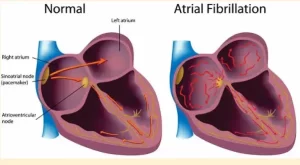By Gabriela Calvi – Epidemiologist| Specialist in | Disease Prevention Podcaster “Good Morning Health”
Even though we are already in the month of August. I would like to inform you of the recent commemoration that took place on July 28, as the “World Hepatitis Day”, proclaimed since 2008 by the World Health Organization (WHO), to promote worldwide all the initiatives that can be carried out to combat this disease.
The World Organization of Hepatitis Partnerships notes that 9 out of 10 people living with viral hepatitis do not know it. At the same time, the Center for Disease Control and Prevention indicates that unfortunately, 90,000 people die each year as a result of hepatitis. However, these deaths are preventable.
Hepatitis is an inflammation of the liver. Whose inflammation produces a swelling, this occurs when the tissues of the body are injured or infected, causing damage to your liver.
There are 5 viral hepatitis viruses mainly called: A, B, C, D, and E. In this article we will talk about hepatitis A and B.
Hepatitis A is a type of viral hepatitis, extremely contagious. It causes an acute, or short-lived, infection. Usually, people get better after several weeks. This is because of the vaccine. Hepatitis A sometimes causes liver dysfunction and even death. But this is more common in adults and people with severe pathologies, such as chronic liver diseases.
Hepatitis A is transmitted through contact with the feces of an infected person. This can happen in several ways: consuming foods made by someone who has the virus and did not wash their hands thoroughly after going to the bathroom.
When drinking contaminated water or eating food that was rinsed with contaminated water. On the other hand, transmission also occurs when you have close contact with someone who has hepatitis A.
Other ways in which the hepatitis A virus can be transmitted, of which, there is great correlation is through certain types of sexual activity (oral-anal sex, a man who has sex with-men, caring for someone sick or using illegal drugs with other people, in turn, people who do not have a suitable place to live and / or live on the streets, where they do not have access to drinking water or bathrooms, are the most vulnerable.
Let’s pay attention to the most common signs and symptoms a person may witness when contracting the hepatitis virus.
Dark yellow urine
diarrhea
fatigue
fever
Gray or clay stools
Joint pain
Loss of appetite
Nausea and vomiting
Abdominal pain
Yellowish eyes and skin, known as jaundice (jondéense)
When it comes to the transmission of hepatitis B. This virus occurs through contact with the blood or other body fluids of an infected person. For example, it can be passed from mother to child during childbirth, by sharing razors or toothbrushes, having unprotected sex, and sharing needles and syringes to inject drugs.
The most effective way to prevent hepatitis B is through the vaccine. If you haven’t been vaccinated, it’s best to use condoms and avoid sharing needles or items like toothbrushes, razors, or nail scissors with an infected person to reduce the chances of exposure. At the same time, you should avoid getting tattoos or piercing on the body in facilities without a license and / or without current permission. At the same time you must ensure that they meet the sterilization requirements.


